Making turkey from scratch can be very challenging for most people. The process is somewhat complicated, and the fridge space should be big enough to hold a turkey for at least a day. This easy dry brine turkey recipe (which requires no cheesecloth) can help resolve those two big problems for any home cook.
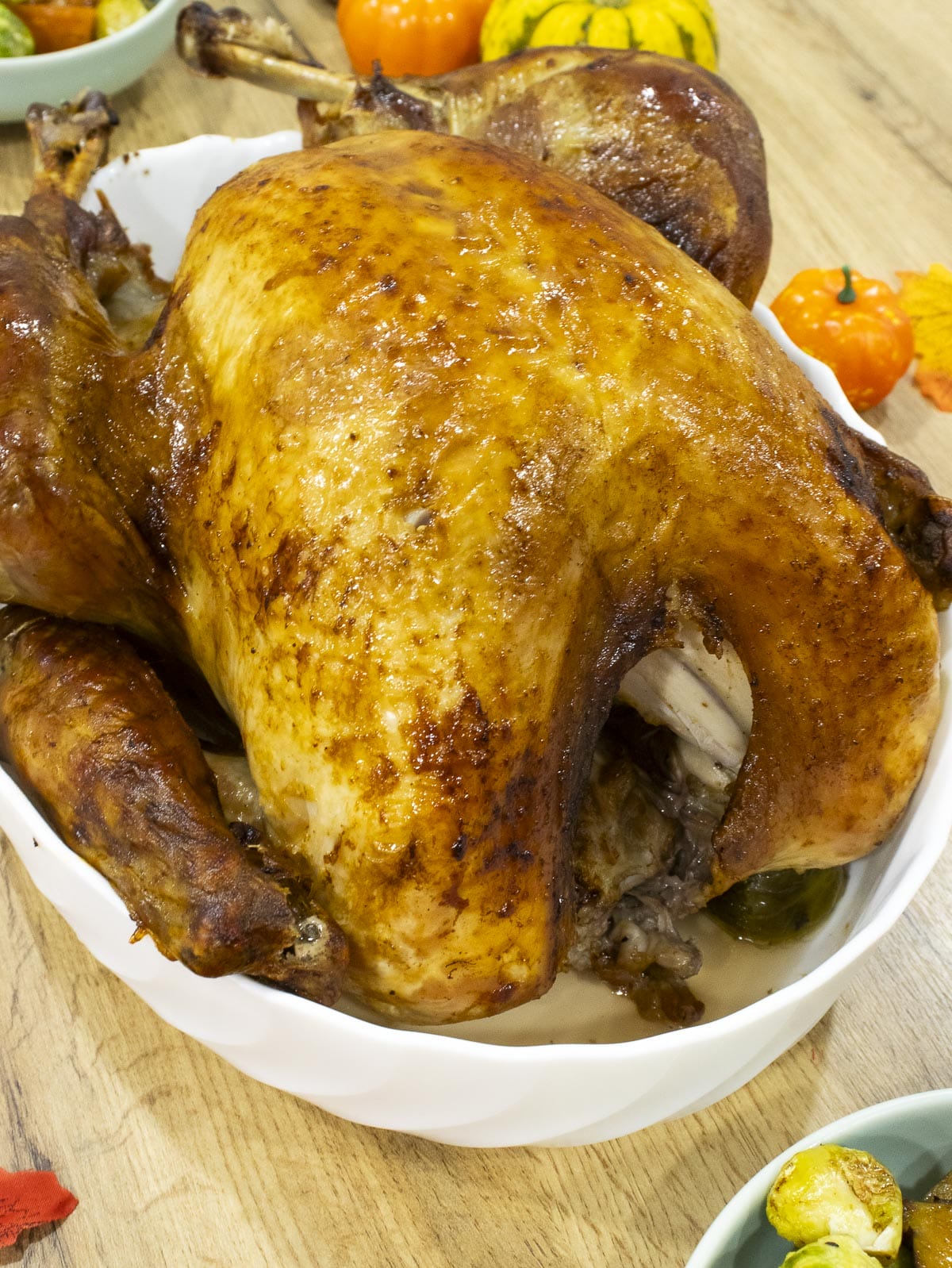
I only use two cooking methods when it comes to turkey. You seriously do not need any complicated recipe. Basically, whatever turkey recipe you find on the internet will either use the dry-brine method (this recipe) or the more famous wet-brine method (see my recipe Perfect Thanksgiving Turkey using wet brine method for more information).
Pick the right turkey for dry brine method
To achieve such a perfect turkey while using this dry brine recipe, you should always pay attention to buying the right turkey first. And yes, not all turkeys you see at your grocery store is equal.
The best turkey for this recipe is the one that says pre-basted or basted on the label. This means the turkey has been marinated in a wet-brine solution or injected with a salty solution before packaging.
This type of turkey is believed to usually taste less good than the one with minimal processing. I promise you that this is just a myth. This easy, dry brine turkey recipe will give you a good turkey for your holiday dinner (if not the best).
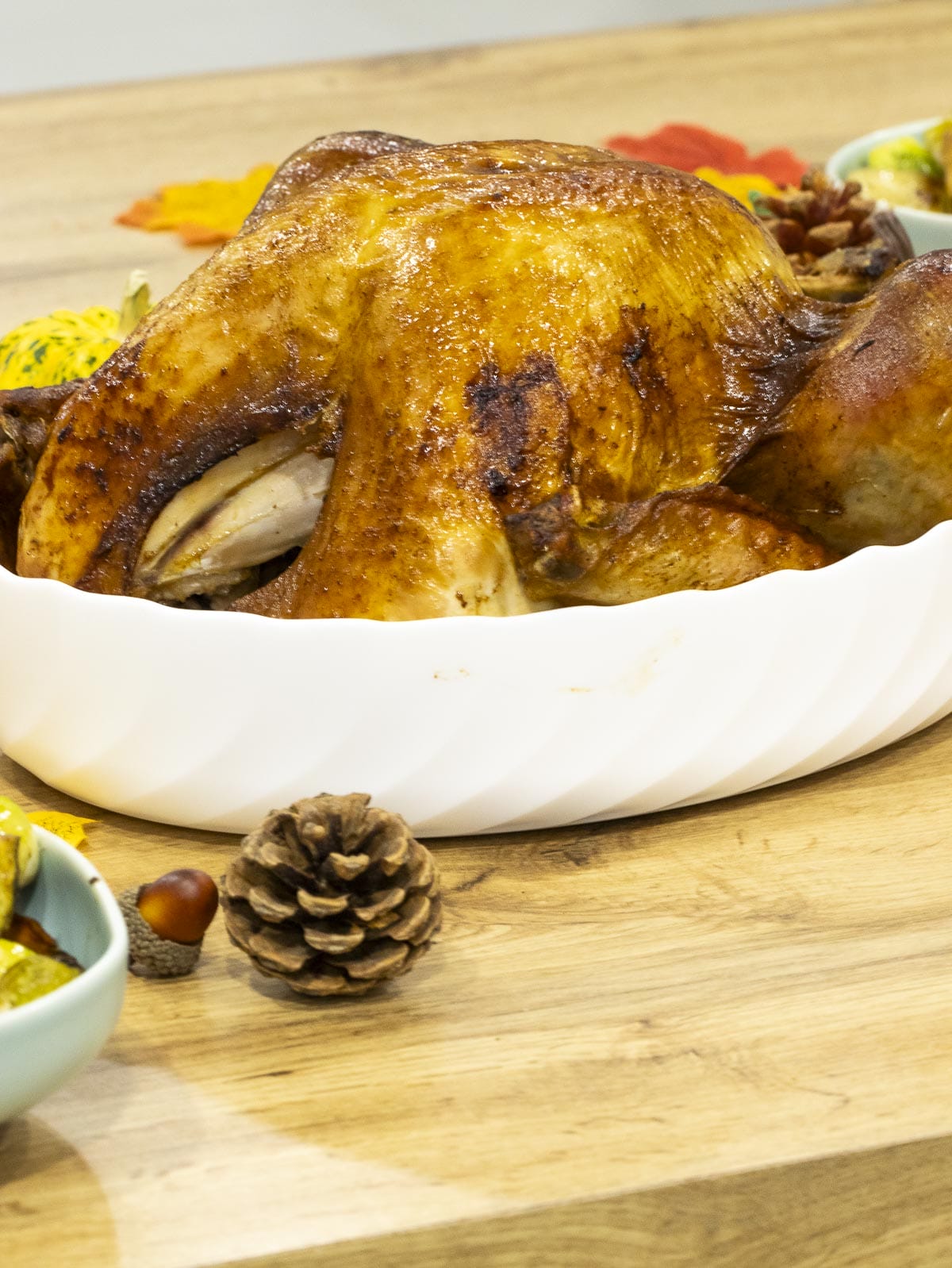
Reasons to buy pre-basted turkey
This pre-basted turkey is the best option if time is not on your side. It only requires 7-8 hours to marinade, not a whole day like the others.
Another reason is that only some have a fridge big enough to hold a turkey using brining liquid. I know this because I am on the same page. I could only use the wet brine method when I worked at the restaurant, and they had a huge walk-in cooler.
So when I'm hosting a holiday dinner at home, and turkey is my masterpiece, this recipe is a keepsake. It works like a charm.
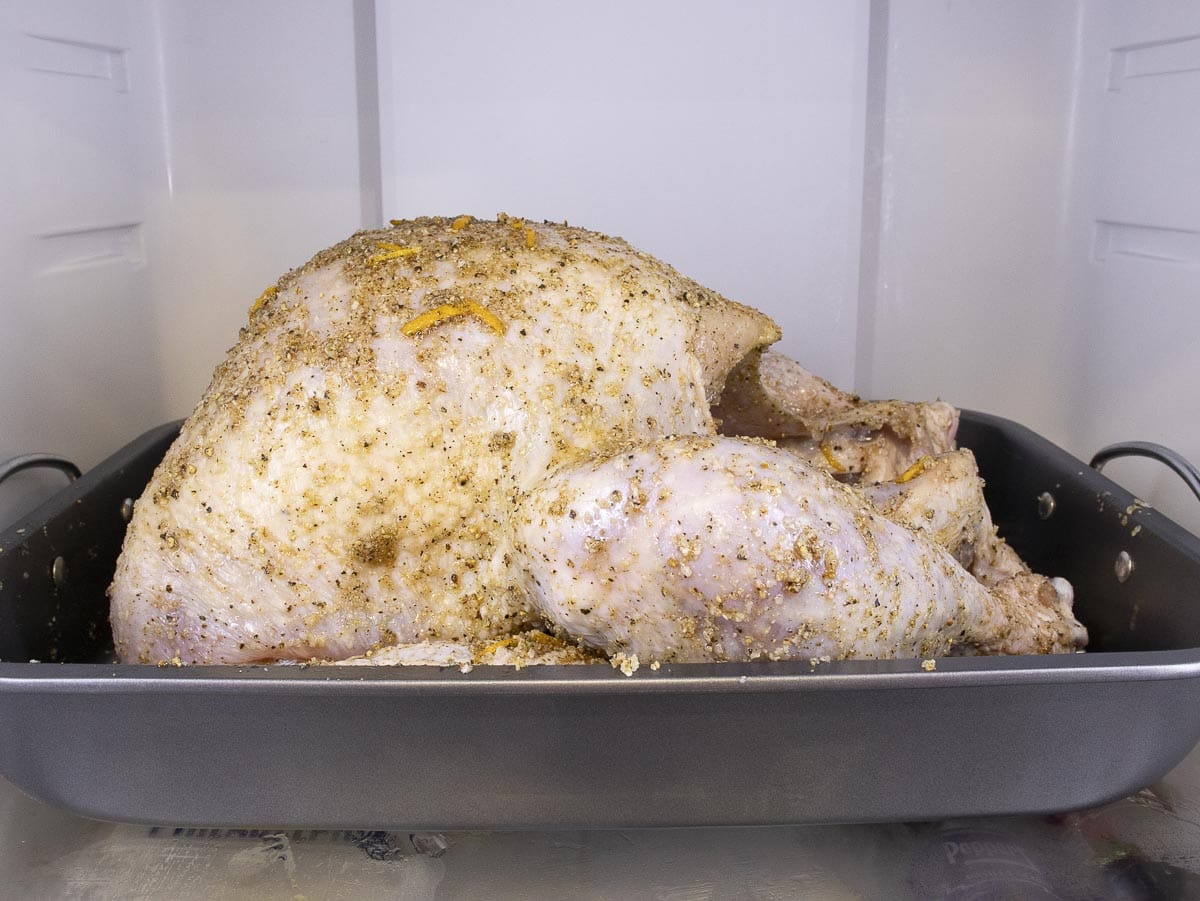
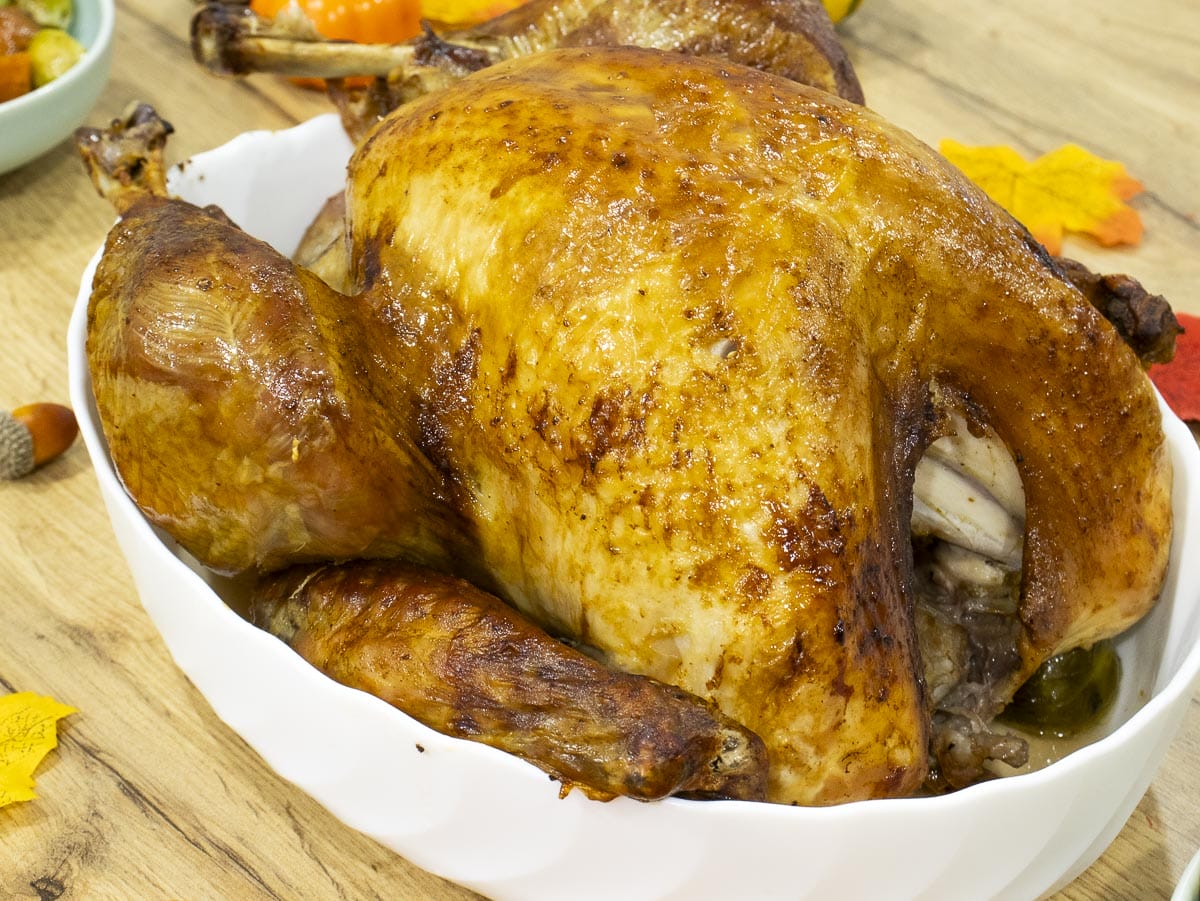
Why doing dry-brine for pre-basted turkey
At this point, you may wonder why we bother to make a dry-brine marinade even though the turkey has already been marinated.
The reason is that a pre-basted turkey can sometimes end up with mushy and too-soft meat (due to the excess liquid injected into it). So, the dry brine rub, which includes salt, sugar, herbs, and spices, helps dehydrate the turkey while also adding more flavors.
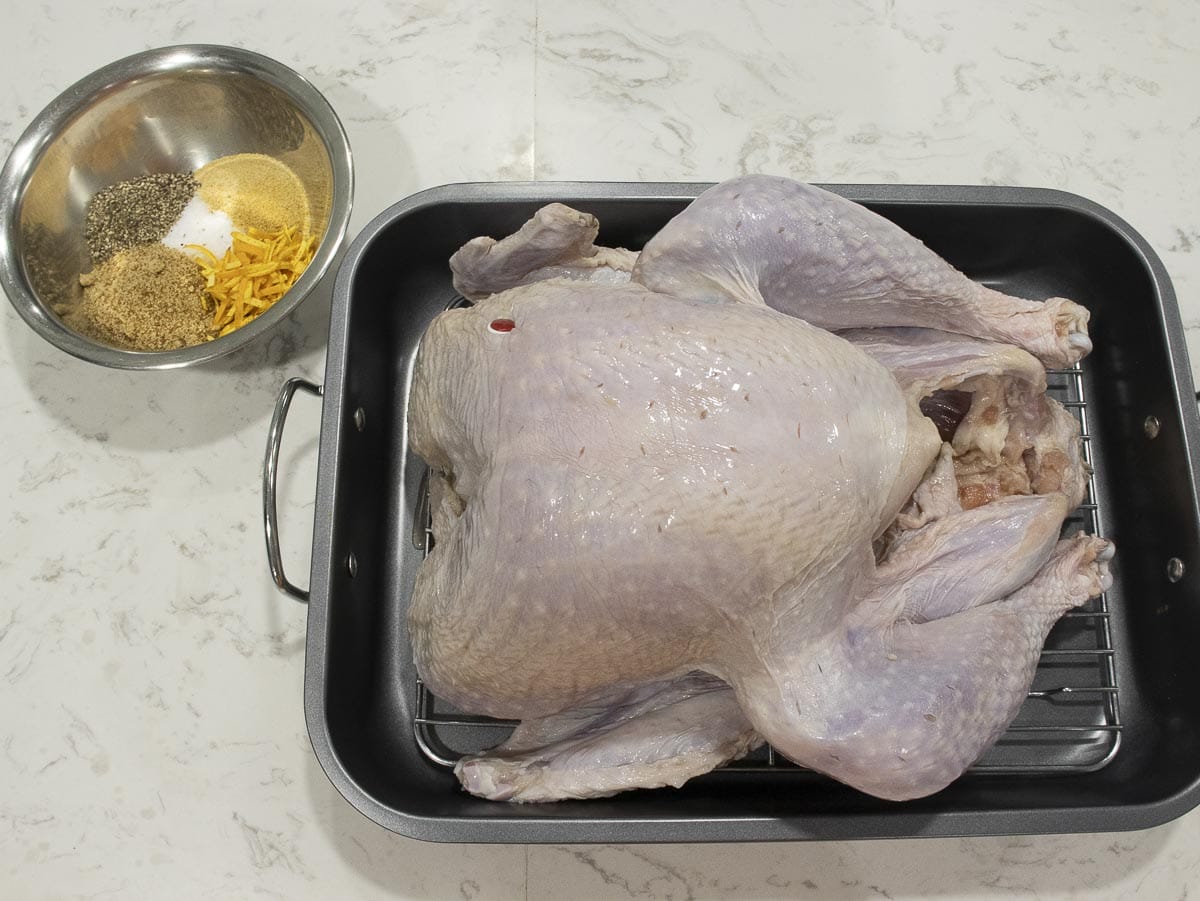
Side dishes for roasted turkey
The most common side dishes to a roasted turkey are gravy (see my creamy turkey pepper gravy recipe) and stuffing.
Other side dishes that will make good accompaniments to this turkey:
Tomato, peach, and spinach salad with vinaigrette dressing
Vegetarian Brussels Sprout Recipe - A Side Dish for Fall Season
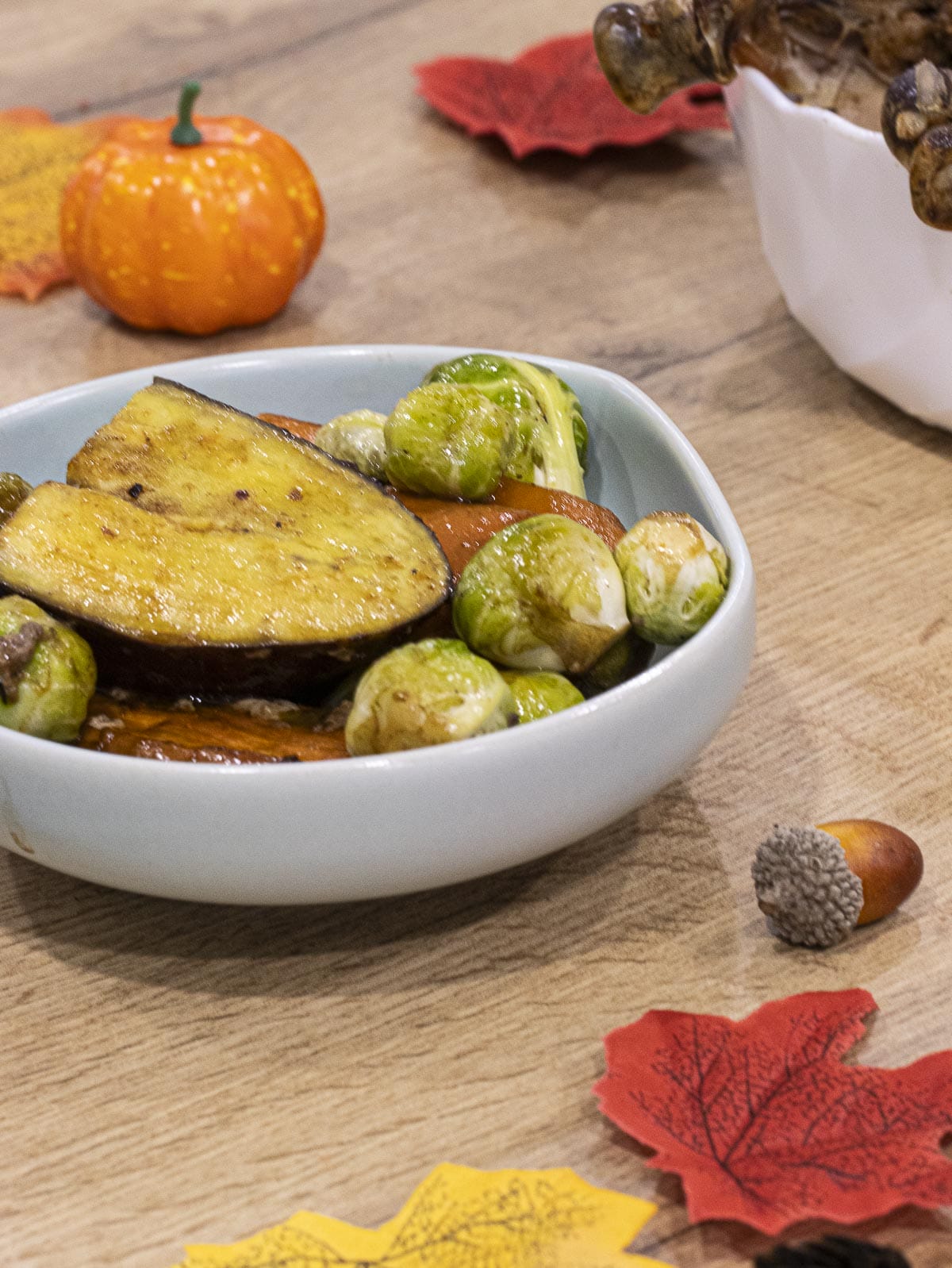
Turkey stuffing
Stuffing turkey seems impractical and can be dangerous for consuming due to the delicacy of any poultry meat. It is very difficult to control temperatures inside a stuffed turkey, there is always a risk of food-borne illness if not handle correctly.
Also, a stuffed turkey must be cooked longer for the stuffing to be finished properly; this may cause the meat (especially the breast meat) to be overcooked and dry.
In this dry brine turkey recipe, I only use large pieces of fresh veggies as stuffing, discarding the rest afterward. It is safer to use large-cut veggies if you do not intend to eat the stuffing and only use them to add more juiciness to the bird during the cooking process.
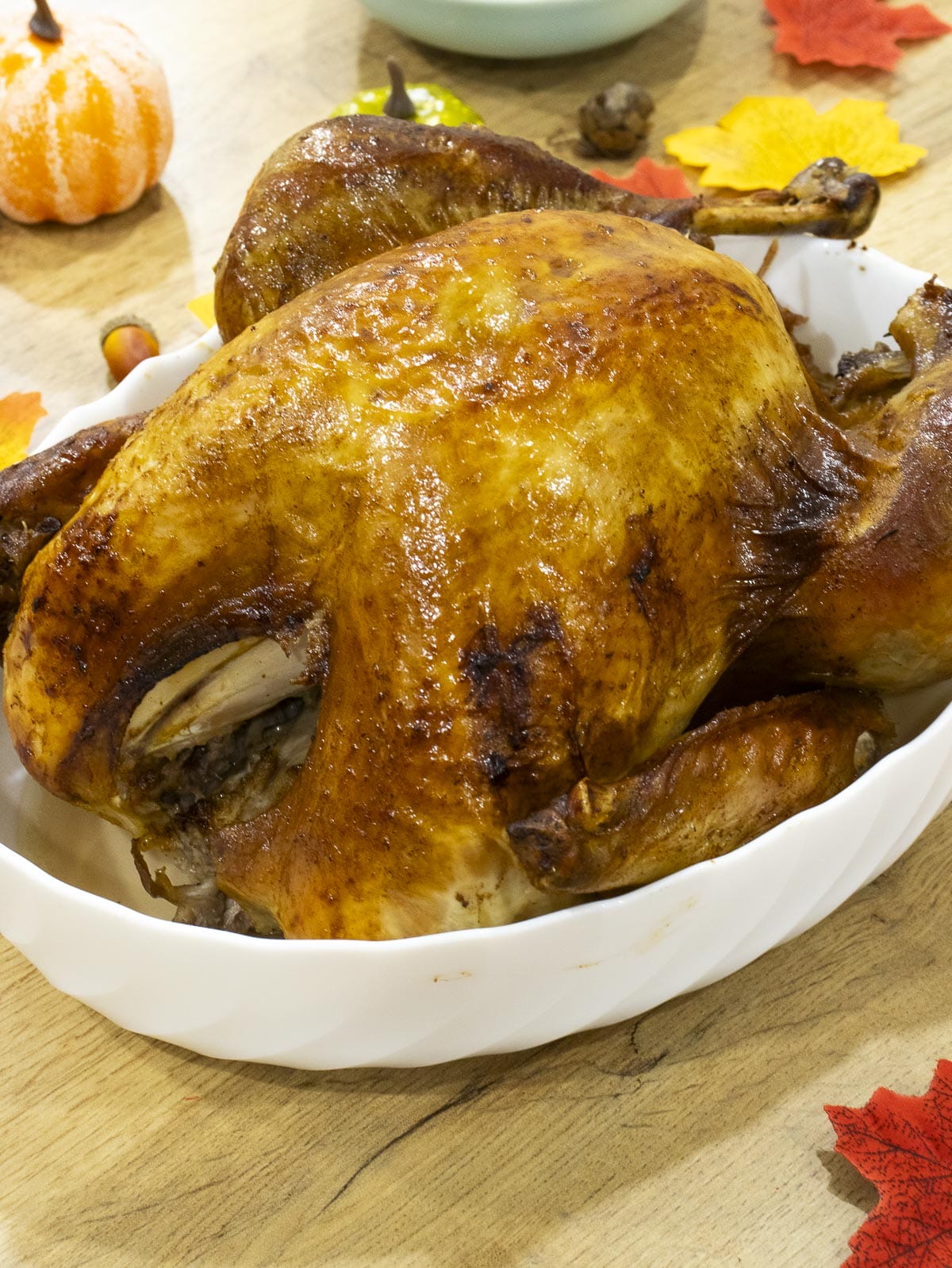
Things to remember before stuffing a turkey
If you use fresh stuffing, you must make sure all ingredients are cold when mixing and stuffing a turkey.
Stuff the turkey as close to cooking time as possible to keep it out of the temperature danger zone regardless of the type of stuffing.
Remove all stuffing from the roasted turkey cavity as soon as possible to prevent bacteria from growing there.
Don't throw away turkey neck and giblets
You can use them to make turkey stock and then use it for gravy. See my simple chicken bone broth for more information about making the best homemade stock.
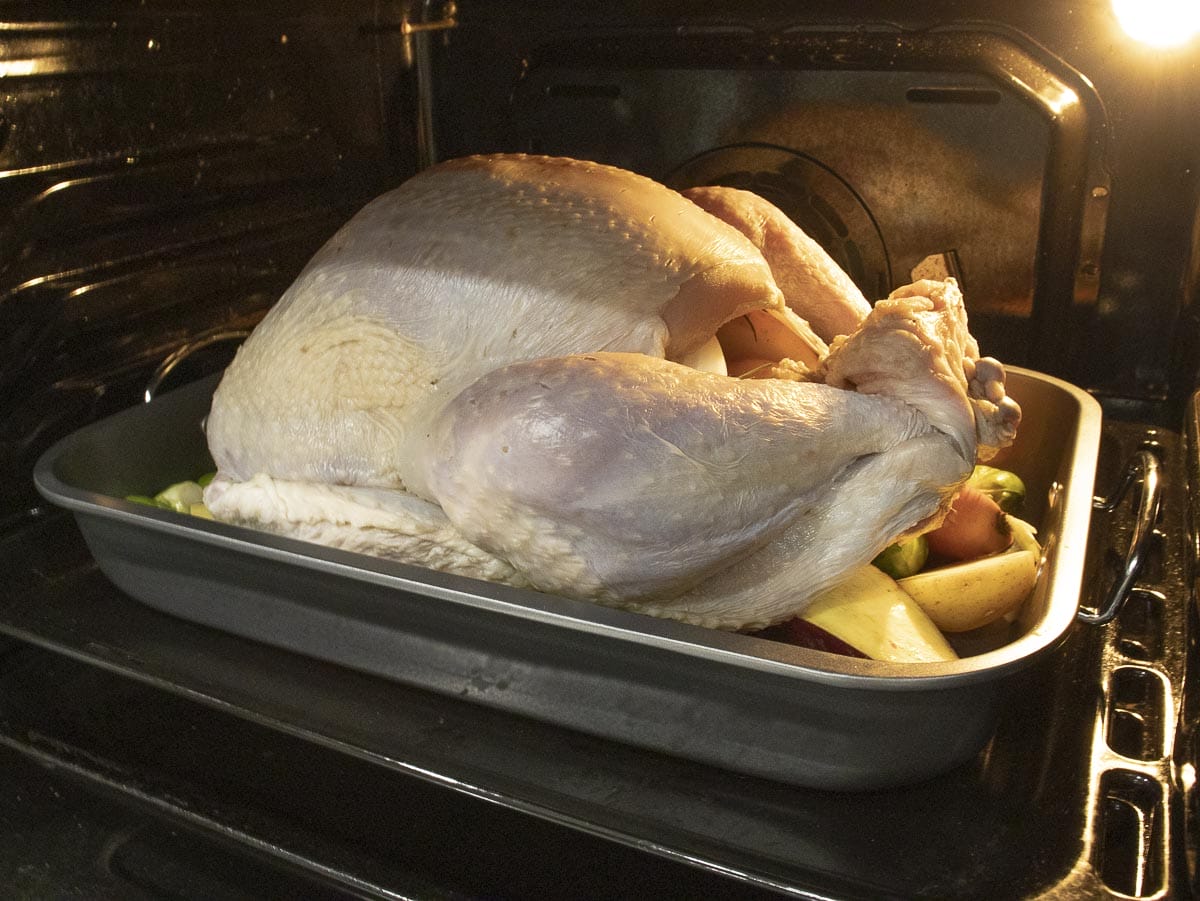
Did you make this recipe? If so please leave a rating and let me know how it went in the comment section. Also, don't forget to tag me #cookmorphosis @cookmorphosis on social media.
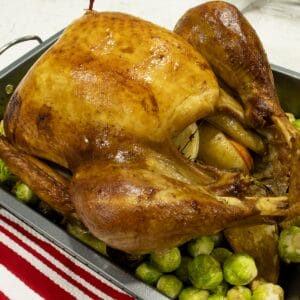
Easy Dry Brine Turkey
Ingredients
- 12 lb turkey pre-basted
Dry brine rub
- ¼ c Kosher salt
- 2 tbsp light brown sugar
- 1 tbsp ground black pepper
- 1 tbsp garlic powder
- ¼ c orange peel
- 2 tbsp vegetable oil
Roasting vegetables (optional)
- 1 lb brussels sprouts
- 1 large carrot quartered
- 3 medium potato cut in half
- 1 large sweet potato quartered
- 1 large white onion
Stuffing vegetables
- 2 sprigs rosemary
- 2 sprigs thyme
- 1 large white onion cut in half
- 1 large carrot cut in half
- 1 medium potato cut in half
Basting
- 2 oz unsalted butter softened
Instructions
Prepping turkey
- Remove the giblets and neck from the turkey's cavity and set aside. Save them to make turkey stock for gravy.
- In a medium mixing bowl, mix together dry brine rub ingredients.
- Place the turkey in a roasting pan with a rack. Rub the turkey inside out with the rub mixture, especially on the breast and thighs.
- Put the turkey in the fridge, uncover, and dry brine for 7 hours (or at least 4 hours).
Roasting turkey
- Pre-heat oven at 400F.
- Take the turkey out of the fridge and rinse it under cold tap water. Rinse the turkey inside out to completely remove the dry brine rub.
- Pat dry turkey using paper towels. Stuff the turkey with stuffing veggies and herbs. Close the cavity of the turkey as tight as possible.
- In a clean roasting pan (you can clean the previous pan or use a new one), add roasting vegetables(except brussels sprouts) and drizzle them with 3 tbsp of vegetable oil. Mix well.
- Place the turkey on top of the vegetables. Roast at 400F for 20 minutes.
- Reduce the oven temperature to 325F and continue cooking the turkey until the internal temperature of the thigh reaches 165F, approximately 1.5 to 2 hours. For a 12-lb turkey, the total cooking time should not exceed 2.5 hours.
- From this point of cooking, you can baste the turkey with softened butter and pan drippings every 30 or 40 minutes.
- The more you baste, the more golden the skin will be. If the turkey begins to overbrown, cover the top loosely with aluminum foil or parchment paper.
- Approximately 45 minutes before the turkey is done, add brussels sprouts to the roasting pan to cook them.
- When the turkey is done, remove it from the roasting pan. Remove the stuffing immediately and discard it.
- Let the turkey rest for at least 15 minutes (ideally 30-40 minutes) to allow even distribution of juices.
- Move the vegetables in the pan to a clean bowl and keep them warm to serve.
- Use the roasting pan with drippings to make gravy to serve together with turkey.
- When the time comes, carve the turkey and serve with gravy and other side dishes of your choice.
Notes
- Don't overcrowd the roasting pan with vegetables. Make sure there is room to create good airflow around the turkey so the skin (especially the one underneath) does not get soggy.
- If you don't use roasting vegetables, use a roasting rack. Don't put the turkey directly onto the pan, as it can become scorching and cook unevenly.
- If you use fresh stuffing, you must make sure all ingredients are cold when mixing and stuffing a turkey.
- Stuff the turkey as close to cooking time as possible to keep it out of the temperature danger zone regardless of the type of stuffing.
- To save time, make turkey stock while the turkey is roasting in the oven.

Leave a Reply